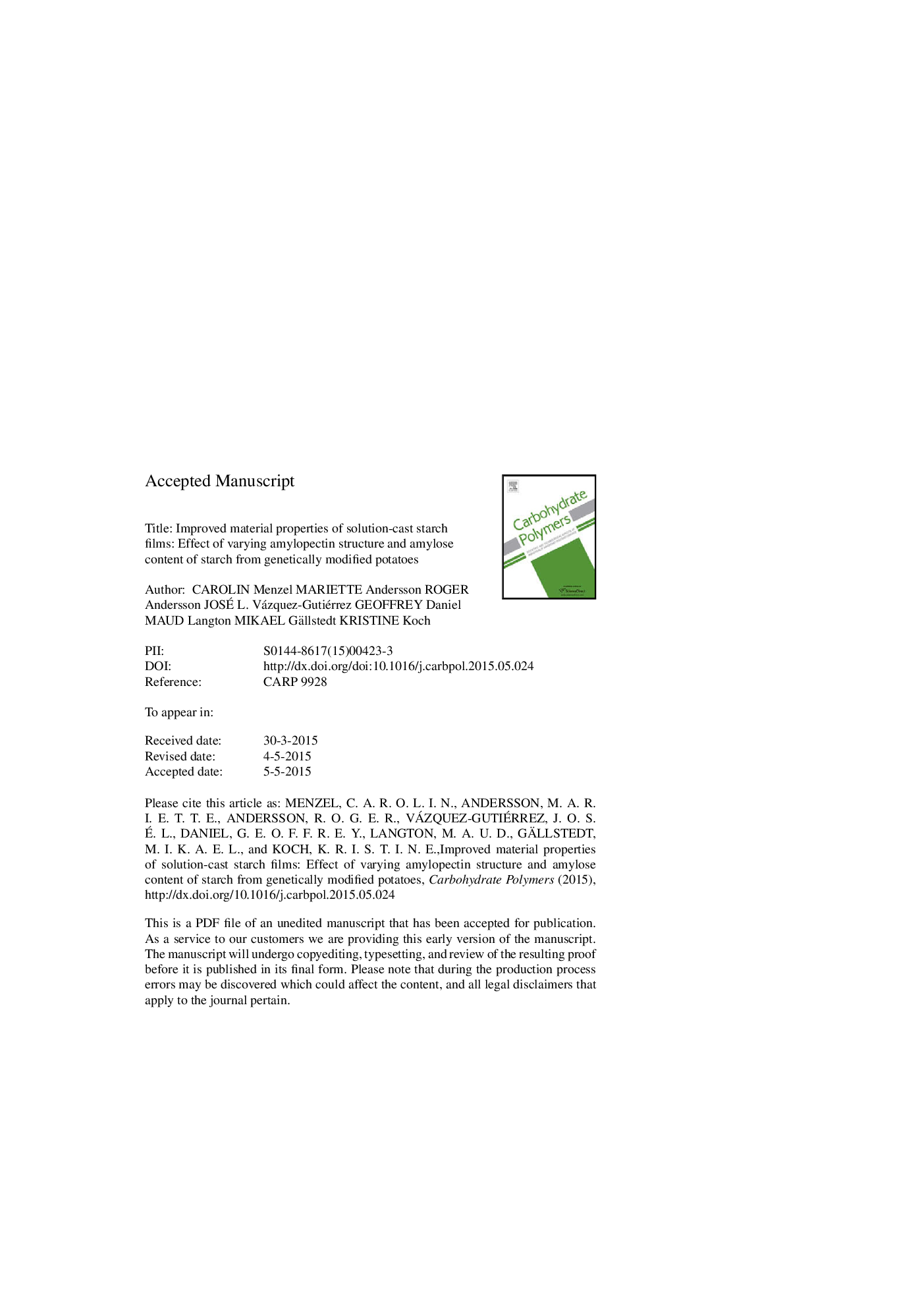| Article ID | Journal | Published Year | Pages | File Type |
|---|---|---|---|---|
| 7788191 | Carbohydrate Polymers | 2015 | 35 Pages |
Abstract
High-amylose potato starches were produced through genetic modification resulting in changed granule morphology and composition, with higher amylose content and increased chain length of amylopectin. The increased amylose content and structural changes in amylopectin enhanced film-forming behavior and improved barrier and tensile properties in starch films. The molecular structure in these starches was related to film-forming properties. Solution-cast films of high-amylose starch revealed a homogeneous structure with increasing surface roughness at higher amylose content, possibly due to amylose aggregation. Films exhibited significantly higher stress and strain at break compared with films of wild-type starch, which could be attributable to the longer chains of amylopectin being involved in the interconnected network and more interaction between chains, as shown using transmission electron microscopy. The oxygen permeability of high-amylose starch films was significantly decreased compared with wild-type starch. The nature of the modified starches makes them an interesting candidate for replacement of non-renewable oxygen and grease barrier polymers used today.
Related Topics
Physical Sciences and Engineering
Chemistry
Organic Chemistry
Authors
Carolin Menzel, Mariette Andersson, Roger Andersson, José L. Vázquez-Gutiérrez, Geoffrey Daniel, Maud Langton, Mikael Gällstedt, Kristine Koch,
